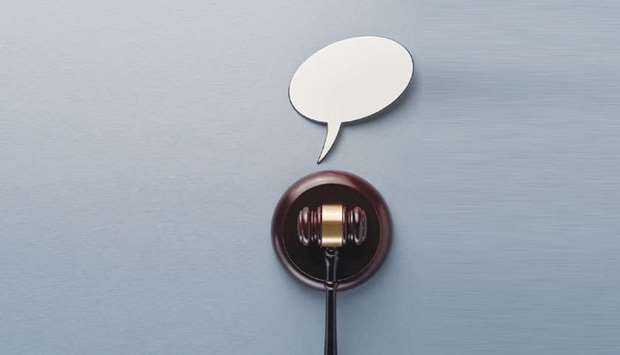This week, the US Supreme Court begins its 2021 term amid a buzz of speculation that it has lost the public’s confidence. A recent Gallup poll finds that only 40% of the public approves of the way the Court handles its job – the lowest level since the survey began in 2000 (when the Court had 62% support).
Some of the justices are concerned. Stephen Breyer, Clarence Thomas, Samuel Alito, and Amy Coney Barrett have all recently made public statements insisting that the Court is not politicised – or as Barrett indelicately put it, “not comprised of a bunch of partisan hacks.”
But public polling should be taken with a grain of salt. The Court’s reputation always fluctuates. Its approval has fallen near the 40% level in the past before recovering, and its current reputation is much better than that of the presidency, Congress, and most other federal institutions.
Moreover, the Court’s decisions do not veer as far from public opinion as one might suspect from much of the media coverage. A recent study by the Supreme Court Public Opinion Project at Harvard University found that a majority of respondents would have decided 15 of 22 publicly salient cases over the last two terms the same way that the Court did.
So, what’s going on? Part of the answer is that the political manoeuvring around judicial appointments has burst into the open. Democrats remain outraged over the Republicans’ successful efforts to block President Barack Obama’s Supreme Court nominee, Merrick Garland, in 2016, and the subsequent confirmations of three right-leaning justices nominated by President Donald Trump.
Appointments to the Supreme Court have become partisan, ideologically charged events – far more so than in the past. That is why, ever since President Ronald Reagan’s nominee, Robert Bork, made the mistake of candidly defending his views in 1987, nominees have limited themselves to blandishments and platitudes, rendering Senate confirmation – the only democratic element of judicial appointments – a meaningless formality.
But another part of the answer has received less attention. The Court holds an increasingly anomalous position as an elite institution in a populist age. The Supreme Court is the least democratic branch of the federal government, designed from the start to prevent legislatures from appeasing majorities seeking to undermine the rights of the minority (particularly the right to own property, including slaves). Accordingly, justices serve for life (unlike nearly all the state judges in the United States, who are elected or appointed for fixed terms), which generally means 30 years or so on the bench.
Today, eight of the nine sitting justices earned their law degrees from Harvard or Yale. All are bona fide members of the professional class. Most are wealthy. They wear robes like priests, deliberate in a building modelled after a Greek temple, and deliver their opinions in technical language accessible only to lawyers (and that more often conceals than discloses the reasons for their decisions). They are – for all practical purposes – immune from removal (no Supreme Court justice has ever been removed) and even serious oversight, because the Court is a self-regulating body.
There are, of course, reasons for these rules and practices. But in a country that increasingly doubts the value of expertise, credentials, and authority, the Court is a vulnerable target, just like the Environmental Protection Agency, the Federal Reserve Board, and the Food and Drug Administration. And the Court is at a disadvantage even compared to these piñatas. Those institutions can defend themselves by pointing to their impact on air quality, monetary policy, and drug safety, respectively, whereas the justices can do little more than insist that their interpretations of the law are correct. This is not a particularly reliable defence: to this day, legal scholars are still debating whether Marbury v Madison, the landmark 1803 ruling that established the principle of judicial review of legislation, was correctly decided.
The Court is thus a natural target for populists, and for mainstream candidates who cater to populist impulses. Trump, for example, routinely attacked federal judges who ruled against his wishes, and targeted liberal Supreme Court Justices Sonia Sotomayor and Ruth Bader Ginsburg for criticising him and his policies. During the 2020 presidential campaign, Joe Biden pointedly refused to reject calls from the left to pack the Court (by pressing Congress to expand its size), and he has since appointed a commission to evaluate judicial reform. While court packing is framed by those on the left as a necessary response to Republican manipulation of the appointments process, it also happens to be a favoured tactic of authoritarian leaders who see independent courts as a threat to their power.
The justices seem to realise that the threat to the Court is not so much partisan as populist. Their usual answer to charges of politicisation is that the Court tends to divide on politically sensitive issues like abortion and race because those cases are difficult. The justices say they apply “judicial philosophies” rather than ideological preferences when they decide these hard cases, implying that they are conscientious rather than politically motivated.
But just saying this is not going to convince anyone. If judicial philosophies cause Republican-appointed and Democratic-appointed justices to split in predictable ways in politically sensitive cases (as they in fact do), admittedly partisan Republican and Democratic elected officials will inevitably come to support or oppose nominees based on the political affiliation of the president who appoints them. Once that norm has been established, it becomes difficult to see how the “judicial philosophies” are anything but partisan. Indeed, commentators and even some of the justices have argued that prevailing judicial philosophies (“originalism,” on the right, and what is sometimes called “representation-reinforcement,” on the left) are simply instruments for advancing ideological goals.
The problem for today’s justices is that even if they are personally conscientious in following their judicial philosophies wherever they lead, they were appointed and confirmed by partisan actors on the basis of reasonably accurate forecasts of their decisions. And so, maybe we shouldn’t be surprised that Alito, channelling populism, blames the media for attacks on the Court, or that Barrett talks about how she stands in grocery lines and participates in car pools, just like ordinary mortals.
Populist defences against populist attacks may seem all well and good. But in a world where Supreme Court justices are supposed to be normal folks who buy groceries, people might start to wonder why presidents from both parties nominate only Ivy Leaguers and former professors.
— Project Syndicate
• Eric Posner, a professor at the University of Chicago Law School, is the author of How Antitrust Failed Workers.

AGAINST THE TIDE: The Court holds an increasingly anomalous position as an elite institution in a populist age.


